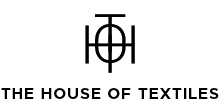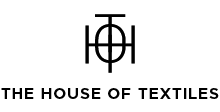Everything You Need to Know About the Printed Fabrics
Incorporating colour into the cloth is the essence of printing on fabric. Adding the colour is intended to make it permanent and hence resistant to friction and washing. There may be repeating patterns in the printing that run the cloth's length. Printed rigid substrates and vinyl are less expensive and perform worse than printed cloth. The textile business offers a variety of printed fabrics.
From intricate patterns to bold designs, fabric printed designs add character and visual appeal to a wide range of garments and home furnishings. Whether you're a fashion enthusiast, a designer, or simply curious about the world of textiles, this article will provide valuable insights into the fascinating realm of printed fabrics.

The History of Printed Fabrics
Printed fabrics have a rich and diverse history that spans different cultures and periods. Textile printing started during the ancient civilizations of Egypt and China, dating back to the 4th and 5th centuries. It continued through the rise of textile printing in Europe during the Renaissance. Artistic, technological, and cultural developments have influenced the evolution of fabric-printed designs. The art of printing fabrics has evolved, and in the present time, a technique called digital printing is used. Rollers that are controlled by computers directly inject the ink into the textile. Detailed, intricate designs can be printed quickly, and the design can be customized easily to match different needs and expectations.
Types of Printed Fabrics
Various materials and fabrics are used for printing; each has its own unique characteristics and uses. The House of Textiles has different types of imported designer printed fabrics, including satin, silk, knitted, embroidered, rayon, polyester, and more. Every fabric has its specialty and contributes majorly to the look and feel of the final printed fabric.
Printing Techniques
Printing techniques play a vital role in achieving stunning and intricate fabric patterns. Different printing techniques, such as block printing, screen printing, digital printing, rotary printing, and heat transfer printing, are utilised today. Understand each technique's principles, advantages, and the specific fabrics they are best suited for.
- Digital Printed Fabric
Digital fabric printing technology enables the creation of fabric designs straight from a computer. An intriguing method and flexible tool for mass fabric modification is digital textile printing. An inkjet printing method, digital textile printing, enables printers to produce sharp graphics on various substrates.
- Foil Printed Fabric
Foil printing is transferring foil from a paper roll to a fabric using heat and glue. There are two ways to print with foil. A hot steel roller presses the foil paper onto the cloth or paper after the design has been printed with adhesive on both surfaces. The second approach entails printing on foil paper first, then pressing the foil onto the material of your choice.
- Reactive Printed Fabric
Reactive printing successfully infuses the colour into a fabric. It can therefore be cleaned numerous times without fading. Greater colour yield is provided, enabling more vibrant colour vibrance and rub fastness. Most natural fabrics can be cleaned using this method, especially those made of natural or protein fibres like silk, cotton, wool, cashmere, linen, hemp, and so on. Reactive printing is not suitable for materials that are poly-based or synthetic.
- Screen Printed Fabric
Screen printing is an effective technique for enhancing the appearance of fabric and producing any type of design that is appropriate for your needs. The results will be well worth the effort you put in, but you will need enough space and time to plunge in and get dirty.

Design and Pattern Development
Fabric printed designs require a creative approach and an understanding of colour theory, motifs, and repeat patterns. Various design elements, such as florals, geometric patterns, abstract motifs, and novelty prints can be used to print fabrics to create visually appealing and on-trend fabrics. Designers often find inspiration for printed fabrics from different sources, such as nature, art, culture, and current fashion trends.
Applications in Fashion
Printed fabrics have a significant presence in the world of fashion. From casual to party wear, they are utilized in many garments, including dresses, tops, skirts, pants, and accessories. The fashion industry has diverse applications of printed fabrics, and designers leverage them to make bold statements and express their creativity.
Printed fabrics also have a strong presence in home decor and furnishings. Printed fabrics, from upholstery fabrics to curtains, bedding, and table linens, can transform any living space's ambiance. Discover the versatility of printed fabrics in home decor and learn how to incorporate them into your interior design projects.
Care and Maintenance
Proper care and maintenance are essential to preserve the beauty and longevity of printed fabrics. Learn about the best practices for washing, drying, and storing printed fabrics to ensure they retain their vibrant colours and structural integrity. Understand any specific considerations for different fabric types and printing techniques.
Sustainability and Printed Fabrics
Sustainability has become a critical concern in the fashion and textile industries in recent years. Explore the growing emphasis on sustainable practices in the production of printed fabrics. Discover eco-friendly printing techniques, organic and recycled fabric options, and the importance of responsible sourcing and manufacturing.

Buy Printed Fabrics for Your Diverse Needs
The House of Textiles has an array of fabrics ranging from satin and knitted printed fabrics to polyester printed fabrics. All our fabrics are imported internationally from China, ensuring the finest quality and build. We have aesthetically appealing prints that have attractive hues and designs. Our fabrics have varied colour palettes that evoke the desired emotions, and different printing techniques are utilized to ensure a wide selection of fabrics for you.










